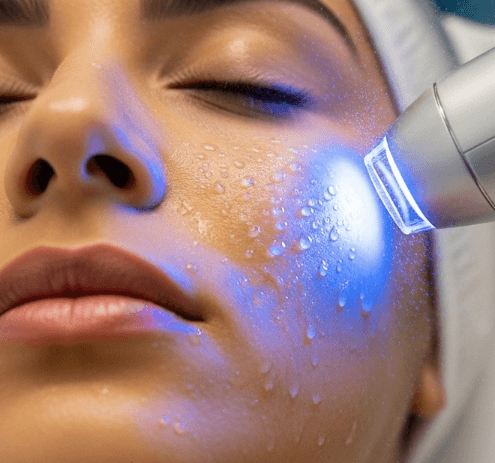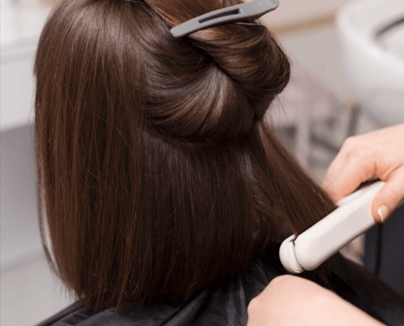Treatment Overview
StarWalker MaQX is a cutting-edge Q-Switched and Picosecond Hybrid Laser System developed by Fotona. It is widely used in Korea for pigmented birthmarks, congenital lesions, tattoos, melasma, and acne pigmentation.
It combines Q-Switched nanosecond pulses with picosecond-like fractional modes, delivering both deep pigment shattering and skin resurfacing effects. This makes it highly versatile for treating congenital pigmented birthmarks (nevus of Ota, café-au-lait spots, Becker’s nevus) as well as acquired lesions (freckles, sun spots).
Korean dermatologists prefer StarWalker MaQX for its multi-wavelength capabilities (532 nm, 585 nm, 650 nm, 1064 nm), which allow targeting of both superficial and deep pigmentation in a safe, controlled manner for Asian skin.
Purpose & Benefits
- Birthmark Removal: Lightens or clears congenital and acquired pigmented birthmarks.
- Multi-Wavelength Precision:
- 532 nm for superficial pigment.
- 1064 nm for deep dermal lesions (e.g., nevus of Ota).
- 585/650 nm for complex or mixed pigmentation.
- Hybrid Function: Combines Q-Switched power with fractional picosecond-like energy.
- Safe for Asian Skin: Lower risk of PIH rebound with tailored Korean protocols.
- Skin Rejuvenation Bonus: Stimulates collagen for smoother skin texture.
Ideal Candidates
StarWalker MaQX in Korea is recommended for:
- Patients with pigmented congenital birthmarks (nevus of Ota, café-au-lait, Becker’s nevus).
- Individuals with stubborn or resistant pigmentation not responding to standard lasers.
- Adults or children (with dermatologist approval) who require safe pigment clearance.
- Patients wanting multi-layered treatment (surface + deep pigment).
Possible Risks & Complications
The treatment is safe when performed by skilled Korean dermatologists, but possible side effects include:
- Redness & Warmth: Temporary, fades within hours to 1–2 days.
- Mild Swelling or Sensitivity: Normal, resolves quickly.
- Temporary Darkening: Pigment may darken before fading.
- Rare Risks: PIH rebound or hypopigmentation if fluence is too high.
Surgical Techniques Used
- Q-Switched 532 nm & 1064 nm: For superficial and deep pigmentation.
- 585 nm & 650 nm Wavelengths: Special modes for complex pigmented lesions.
- MaQX Pulse Technology: Delivers high energy in short bursts to break pigment safely.
- Fractional Mode: Creates micro-columns for collagen stimulation and better pigment clearance.
Protocol: Typically 4–8 sessions, spaced 4–6 weeks apart, depending on birthmark depth and size.
Recovery & Aftercare
Immediately: Mild redness, tingling, or warmth.
1–3 Days: Pigment may darken, small scabs may form.
1–2 Weeks: Visible fading of birthmark begins.
Aftercare Tips:
- Apply SPF 50+ sunscreen daily.
- Use soothing creams and barrier-strengthening serums.
- Avoid peeling or scratching scabs.
- Refrain from harsh exfoliants or retinoids for 5–7 days.
Results & Longevity
- After 1 Session: Subtle lightening of pigmentation.
- After 2–3 Sessions: Noticeable fading of birthmark.
- After 4–6 Sessions: Significant clearance of many pigmented lesions.
- After 8 Sessions: Resistant congenital birthmarks show major improvement.
- Long-Term: Many birthmarks are permanently reduced; some may require touch-ups.
Treatment Process in Korea
Consultation & Skin Analysis
- Dermatologist identifies type and depth of birthmark.
- Custom wavelength and protocol selected.
Preparation
- Cleansing and application of protective eyewear.
- Numbing cream if needed.
StarWalker MaQX Session
- Step 1: Laser passes at chosen wavelength (532 nm for surface, 1064 nm for deep).
- Step 2: Fractional MaQX mode used for resistant or textured areas.
- Step 3: Cooling mask or serum applied.
- Duration: 20–40 minutes depending on lesion size.
Post-Treatment Care
- Soothing ointments applied.
- Sunscreen emphasized before discharge.
Follow-Up
- 4–8 sessions usually required.
- May be combined with Fractional CO₂, RF, or whitening serums for enhanced clearance.
Unique Korean Advantages
- Full Wavelength Spectrum: StarWalker offers multiple settings for complex birthmarks.
- Asian Skin Protocols: Energy adjusted to prevent PIH.
- Combination Packages: Often paired with Pico, CO₂, or RF for difficult lesions.
- Global Reputation: Korean clinics are recognized leaders in pigmentation treatment.
Cost Range (Estimated)
- Small Lesion (per session): USD 200 – 350
- Medium to Large Lesion (per session): USD 300 – 600
- 4–8 Session Package: USD 1,200 – 3,200
Additional Costs:
- Consultation: USD 20 – 50
- Add-ons (Glutathione drips, Vitamin C serums, TXA): USD 100 – 200
- Boosters (PRP, Rejuran, exosomes): USD 200 – 500
Example Korean Packages:
- Basic StarWalker Program (3 sessions): USD 700–900
- Advanced Program (StarWalker + Whitening Serums): USD 1,200–1,600
- Premium Program (StarWalker + Fractional/RF + Boosters): USD 2,000–3,200
Popular Clinics in Seoul
- Oracle Dermatology: StarWalker MaQX for congenital pigmented birthmarks.
- Banobagi Dermatology: StarWalker + Pico combo for stubborn pigment.
- Renewme Skin Clinic: StarWalker with whitening serums for birthmark fading.
- View Plastic & Dermatology: StarWalker + Fractional laser for pigment + texture.
- Chaum Anti-Aging Center: Premium StarWalker programs with regenerative boosters.




